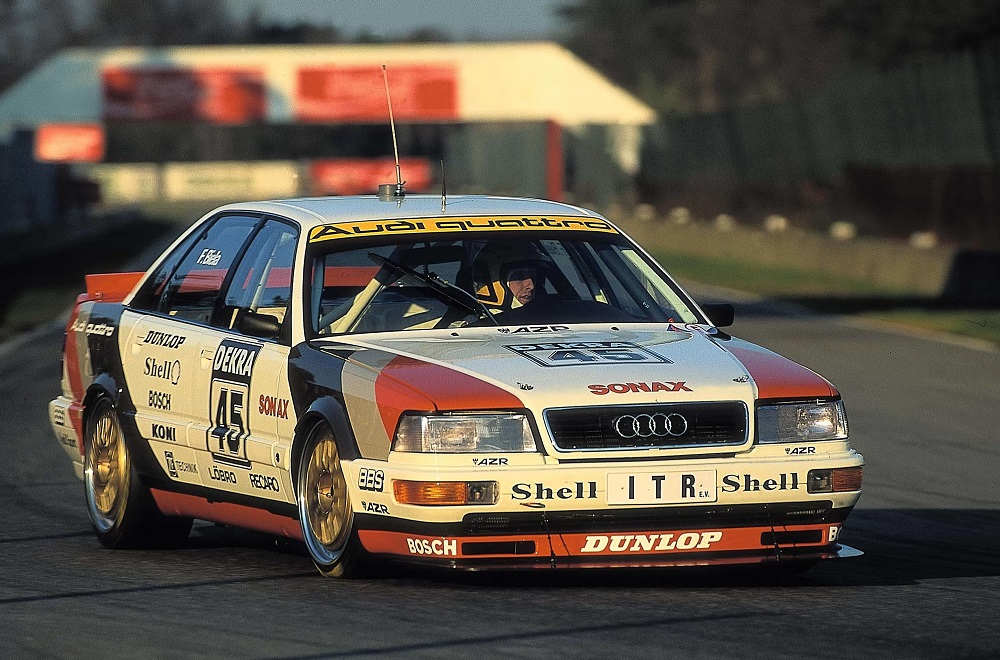Giant Slayer: The 1990 Audi V8 Quattro DTM
Audi returned to Germany after being banned for being too fast. So with Audi V8 Quattro DTM, they continued the tradition of being too fast.
Audi was so good in the United States, winning both the 1988 Trans Am and 1989 IMSA championships, that the Americans effectively banned the all-wheel-drive automaker from competition. So Audi went back home to Germany, hoping to compete in the 1990 Deutsche Tourenwagen Meisterschaft (DTM) German touring car championship. There was only one problem. Audi’s first two race cars weren’t legally allowed to compete in DTM either, so Audi needed to build itself a third, brand-new race car in as many years.
But let’s back up for just a touch of context.
Throughout the the 1980s, DTM saw a wide variety of participants, but the only real three that mattered were BMW, Mercedes, and Ford. Now, up to this point, Ford had used a turbocharged Sierra RS500 Cosworth. Which helped them secure the 1988 title. BMW and Mercedes, however, did not. They ran naturally-aspirated engines.
Which is an odd coincidence because, after the 1989 season, DTM’s governing decided that turbochargers were making the race more dangerous and too expensive. So they banned turbochargers for the 1990 season. In other words, no Ford with the Cossie engine. And no Audi with a turbo 5-cylinder.
Meanwhile, BMW and Mercedes needed to make no changes to their 2.5L naturally-aspirated powerplants. Both engines produced 330 horsepower, and the cars themselves were fairly evenly matched and had been since 1984. They were likely expecting Audi to follow suit by running their 5-cylinder as naturally aspirated.
But instead, Audi pulled the wildest of wild cards…
From Humble Beginnings
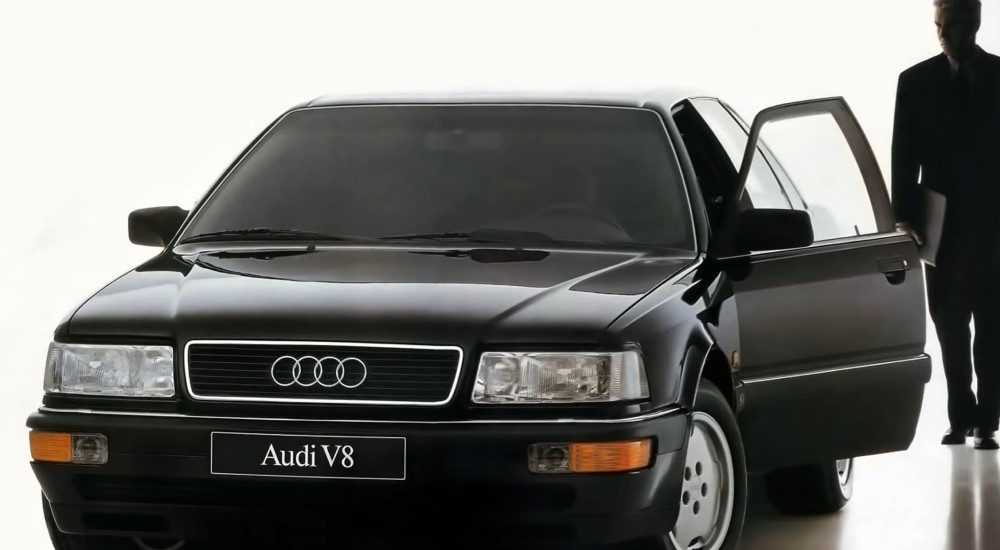
Off the race track, BMW and Mercedes cast a massive shadow over Audi in the 1980s. So, in 1988, Audi introduced the four-door Audi V8 as its newest flagship. On the outside, the V8 offered two-wheelbase options and resembled an enlarged version of the Audi 80. In terms of design, it wasn’t particularly distinctive for the era. But Audi splurged on luxury features, with many elements as standard that other companies offered as options, if at all.
Under the hood was a 3.6L V8 engine producing 247 horsepower and 251 lb/ft torque. (Essentially, Audi stuck two 1.6L Golf GTI engines together at the crank.) But weighing it at two tons with that amount of power made the Audi V8 less than sporty. Especially in comparison to a 1989 M3 or 190E.
Which is why it must have been shocking to see Audi put a flagship executive car up against sports saloons in a touring car race. With an engine that was entirely unproven on the racetrack.
To compete, Audi Group A homologated the Audi V8, pushing the 3.6L engine to 414 horsepower and leaning the whole car down to roughly 2,700 pounds. (I guess luxury weighs a LOT.) Most importantly, engineers retained the iconic Quattro AWD system, providing a crucial advantage over the Mercedes and BMW.
Still, when it first showed up, the Audi V8 Quattro DTM looked like a wrestler wearing a business suit walking into the ring.
Returning Legends
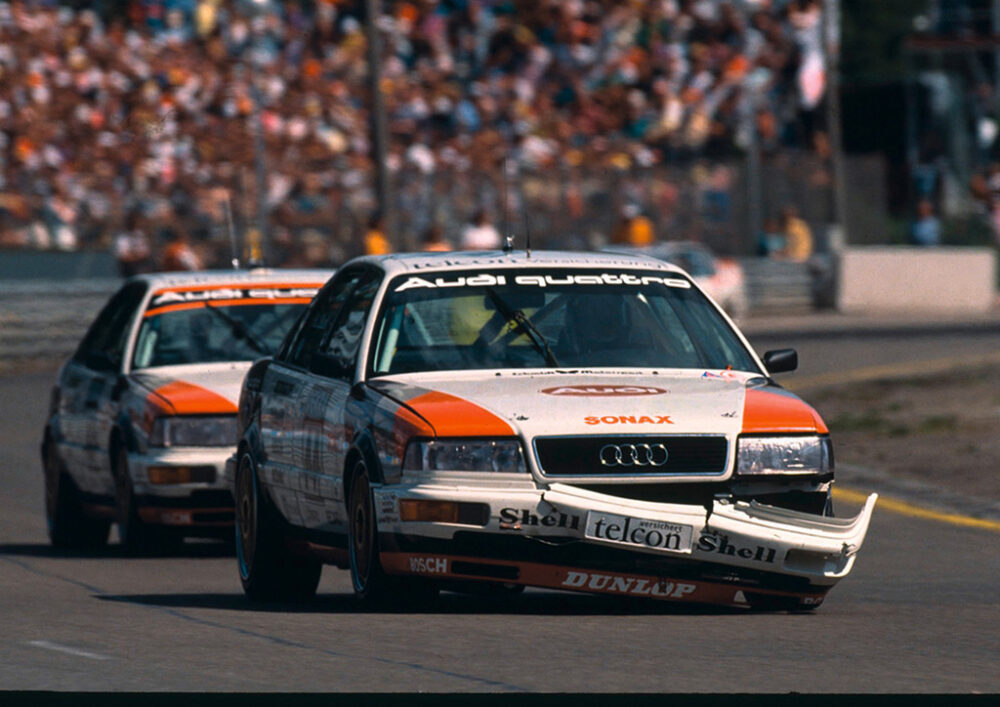
The Audi V8 Quattro DTM entered the original works team with two drivers, both familiar faces: Hans-Joachim Stuck, and Walter Röhrl, in cars #44 and #45, respectively. The latter of whom started competing towards the mid-season. A third driver, Frank Jelinski, joined late in the season in rounds 19 and 20, we’ll get there. For its inaugural race, Audi entered the sole #44, driven by Stuck. However, another car struck him from the back and he had to pit for a new tire. In spite of being nearly dead last, Stuck made a heroic recovery run, finishing 14th place with the fastest lap.
Meanwhile, Mercedes suffered with weight issues from ballast, and BMW had massive reliability problems – seven broken engines over the weekend.
By Race 2 of Round 2 at Hockenheim, Stuck’s Audi took home the silver. At this point, BMW, Mercedes, Opel, and others were sweating bullets, accusing Stuck of sandbagging through qualifying. Reliability wasn’t great with Audi though, either, and the car suffered numerous mechanical failures throughout the season. Which is to be expected when teething a first-time racecar.
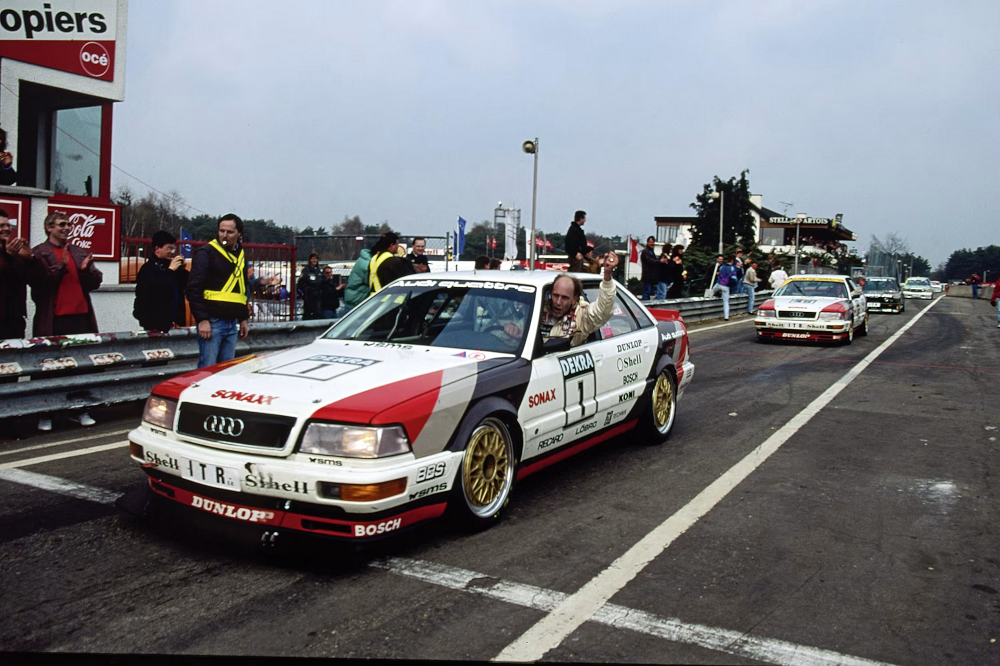
It took all of four rounds before the V8 secured its first wins, back-to-back at Avus. Using its six-speed gearbox and AWD, Audi continued its dominant streak whenever the stars aligned. Pole at Round 5, two wins in Round 6. Reliability issues struck at the Nordschleife, setting Audi back again. And then for the next round, Stuck was joined by Röhrl, where they took a 1-2, followed by 3-5. Stuck led Röhrl both times. Eventually, the officials had enough, and they slapped an 80kg handicap ballast on the car. Even with Stuck driving, the best he could manage was 8th.
Now They’re Just Showing Off
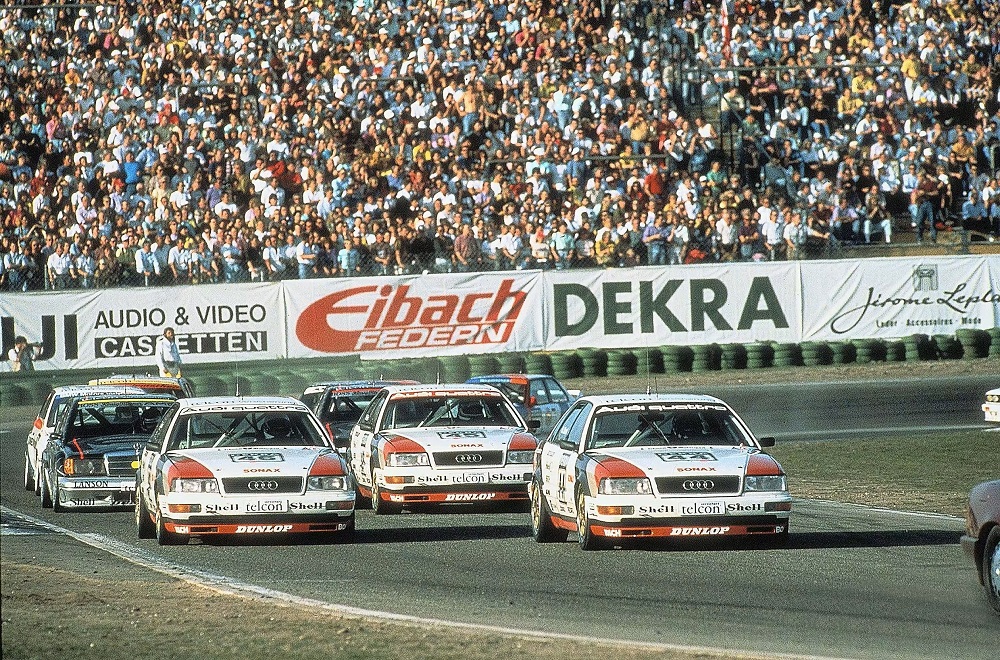
Eventually, officials changed the ballast to 30kg due to the engines being underpowered, much to the disappointment of Mercedes and BMW. This time, it was Röhrl that raised the gold trophy, taking Race 2 of Nürburgring GP. With most of the mechanical issues sorted, Audi entered a third car for the final round they’d enter: #46, driven by Jelinski. These two races remain among the most heroic drives for the Audis, with the cars crossing the line for a full podium: 1-2-3, in both races. When people mention the apparent prowess of this full-size saloon car, they’re generally talking about these races.
Kyalami in South Africa followed, but Audi elected not to participate. Still, in spite of the dropped round, Stuck claimed the championship win for Audi. Quite literally, three years in a row at this point, Audi entered three different series with three different cars. And won all three championships. If that doesn’t tell you something about how proficient Audi was at making sedans go fast, nothing will.
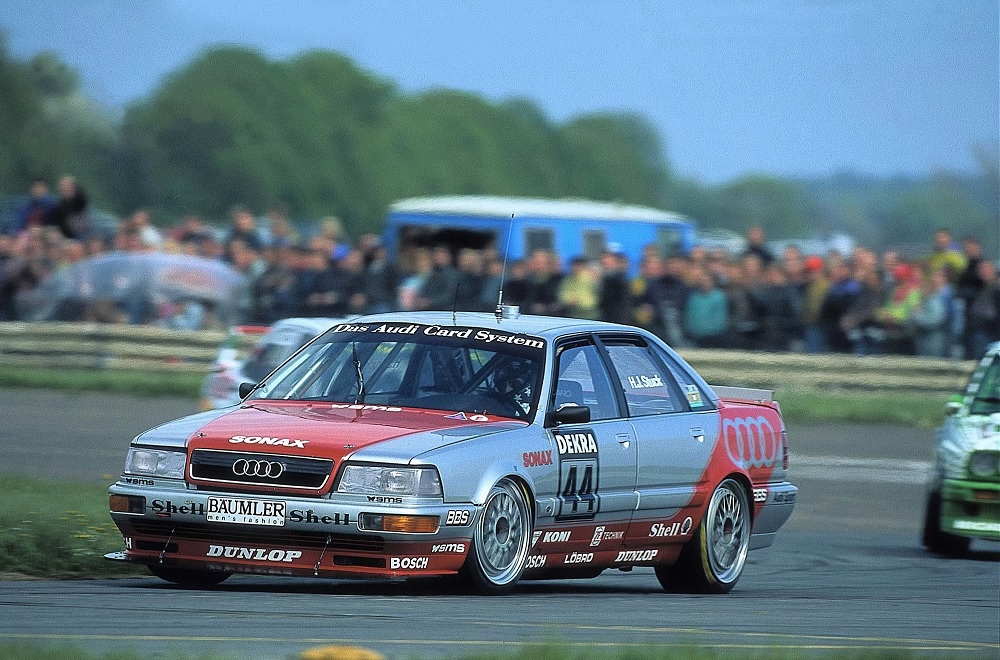
And it gets better. Audi V8 Quattro DTM stayed in the series for the following season. And in that season, Audi held the majority-share of fastest laps, and secured no less than 10 wins across five cars. They didn’t do so hot by 1992, suffering from numerous DNFs before backing out of the final season. But Audi did their job at that point. Originally started as a publicity stunt to salvage a failing reputation in the US, the Audi Works teams built a total of three incredibly fast and iconic racecars in as many years. Audi capitalized on their success with the release of their first full-size super saloon, the RS2 Avant, the first RS Audi. Since then, they continued producing numerous winning touring cars, claiming eleven drivers’ titles and six manufacturer’s championships in DTM alone.
For more information on the subject, check out this 5-part series featuring interviews with Stuck here.
Racing images from: Audi Motorsport

